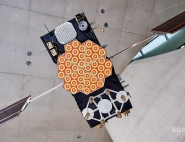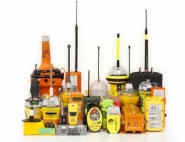Key milestones
In July 1988, the International Cospas-Sarsat Programme Agreement (ICSPA) is signed in Paris, France. This agreement secures the Cospas-Sarsat system’s future and paves the way for its adoption by the International Maritime Organization (IMO) as a component of the Global Maritime Distress and Safety System (GMDSS).
The early 1990s sees a new generation of distress beacons emitting a digital signal on the 406-MHz frequency.
1998: The GEOSAR system is declared operational globally (except at high latitudes above 70° North and below 70° South) with two U.S. satellites (GOES-8 and GOES-9) and an Indian satellite (INSAT 2-A) to complement the LEOSAR system.
1996: The first 406-MHz location protocol beacons enter service, enabling transmission of encoded position data from their built-in GNSS receiver.
1999: Seven LEOSAR satellites and three GEOSAR satellites are now operational and some 200,000 406-MHz beacons and 600,000 121.5-MHz beacons in circulation.
2000: The United States and the European Commission each present their project to put 406-MHz repeaters on the future MEO satellites of their respective GPS and Galileo constellations. They both announce their intention to adapt their systems to ensure compatibility with Cospas-Sarsat 406-MHz beacons.
2005: A new agreement between Canada, France, the Russian Federation and the United States gives the programme legal person status under Canadian law, conferring it the privileges and immunities of an international organization. The programme’s Secretariat moves to Montreal in Quebec, Canada, in July 2005.
December 2006: A joint “Declaration of Intent for Cooperation on the Development and Evaluation of the Medium Earth Orbit Search and Rescue (MEOSAR) Satellite System between the Cooperating Agencies of the International Cospas-Sarsat Programme and the Galileo Joint Undertaking” is signed.
1 February 2009: The Cospas-Sarsat system stops processing 121.5-MHz signals.
December 2016: MEOSAR EOC (Early Operational Capability) operations begin. Two MCCs—USMCC and FMCC—are initially qualified and validated to process and forward LEOSAR, GEOSAR and MEOSAR (LGM) data.
End 2019: Eight MCCs are commissioned to support LGM operations.

